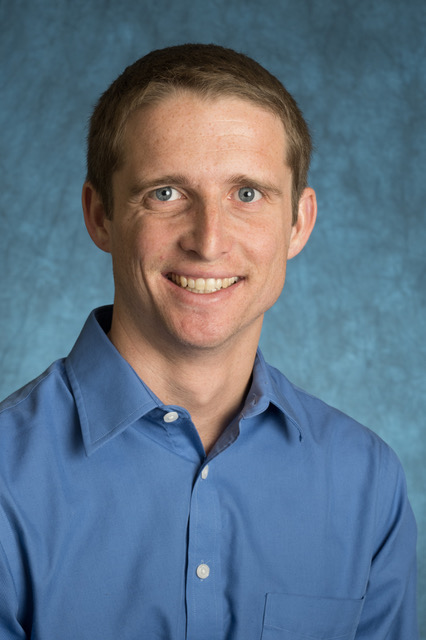Rick Schulte
Biosketch

I grew up in the Southeast before moving to Colorado and graduating from Fort Collins High School (go Lambkins!). I then went on to Santa Clara University and double majored in Physics and Mathematics. While at Santa Clara, I had a summer internship at Remote Sensing Systems and became interested in atmospheric science. After college, I spent a year in Micronesia teaching high school math and science before beginning graduate school at CSU. I was advised by Christian Kummerow, and my graduate research focused on the retrieval of water vapor, cloud properties, and precipitation from satellites instruments including TEMPEST-D, GPM, and CloudSat. My current research focuses on how measurements from the upcoming INCUS mission can be used to understand why convective storms form when and where they do. I'm also working with Matt Lebsock at JPL to improve CloudSat retrievals of cloud water content. In my free time, I enjoy running, biking, hiking, skiing, playing board games, and watching sports.
Education
Ph.D., Atmospheric Science, Colorado State University, 2022
M.S., Atmospheric Science, Colorado State University, 2018
B.S., Physics, Santa Clara University, 2014
B.S., Mathematics, Santa Clara University, 2014
Awards
NASA FINESST Fellowship, 2019-2022
Outstanding Student Presentation Award, 2021 AGU Fall Meeting
Outstanding Student Presentation Award, 2019 EUMETSAT/AMS/NOAA Joint Satellite Conference
American Meteorological Society Graduate Fellowship, 2015-2016
Publications
Schulte, R.M., R.J. Chase, B. Dolan, P.J. Marinescu, D.J. Posselt, K.L. Rasmussen, and S.C. van den Heever, 2024: Unclouding the correlations: A principal component analysis of convective environments. Geophys. Res. Lett., 51(24), e2024GL111732, https://doi.org/10.1029/2024GL111732
Schulte, R.M., M.D. Lebsock, J.M. Haynes, and Y. Hu, 2024: A random forest algorithm for the prediction of cloud liquid water content from combined CloudSat/CALIPSO observations. Atmos. Meas. Tech., 17(11), 3583-3596, https://doi.org/10.5194/amt-17-3583-2024
Schulte, R.M., M.D. Lebsock, and J.M. Haynes, 2023: What CloudSat cannot see: liquid water contents inferred from MODIS and CALIOP observations. Atmos. Meas. Tech., 16(14), 3531-3546, https://doi.org/10.5194/amt-16-3531-2023
Schulte, R.M., C.D. Kummerow, S. Saleeby, and G.G. Mace, 2023: How accurately can warm rain realistically be retrieved with satellite sensors? Part 2: Horizontal and vertical heterogeneities. J. Appl. Meteor. Climatol., 61(9), 1087-1105, https://doi.org/10.1175/JAMC-D-22-0051.1.
Schulte, R.M. and C.D. Kummerow, 2022: Can DSD assumptions explain the differences in satellite estimates of warm rain? J. Atmos. Ocean. Technol., 39(12), 1889-1901, https://doi.org/10.1175/JTECH-D-22-0036.1.
Schulte, R.M., C.D. Kummerow, C. Klepp, and G.G. Mace, 2022: How accurately can warm rain realistically be retrieved with satellite sensors? Part 1: DSD uncertainties. J. Appl. Meteor. Climatol., 61(9), 1087-1105, https://doi.org/10.1175/JAMC-D-21-0158.1.
Schulte, R.M., C.D. Kummerow, W. Berg, S.C. Reising, S.T. Brown, T.C. Gaier, B.H. Lim, and S. Padmanabhan, 2020: An passive microwave retrieval algorithm with minimal view-angle bias: Application to the TEMPEST-D CubeSat Mission. J. Atmos. and Ocean. Technol., 37 (2): 197-210, https://doi.org/10.1175/JTECH-D-19-0163.1.
Schulte, R.M., and C.D. Kummerow, 2019: An optimal estimation retrieval algorithm for microwave humidity sounding channels with minimal scan position bias. J. Atmos. Ocean. Technol., 36(3), 409-425, https://doi.org/10.1175/JTECH-D-18-0133.1.
Service and Outreach
Member of AGU Technical Committee on Precipitation, 2018-present
Mentored undergraduate interns Charlie Remmers during Summer 2024 and Hector Bonilla during Summer 2020
Member of NASA Aerosol, Clouds, Convection, and Precipitation (A-CCP) Science Impact Team (SIT), 2019-2021
FORTCAST (Northern Colorado AMS chapter) President, 2017-2018
Teaching Assistant for ATS606 (Introduction to Climate), Spring 2017
Atmospheric Science Department Graduate Student Representative, 2016-2017
Last Updated: 1/25